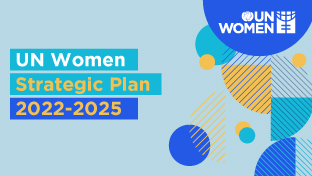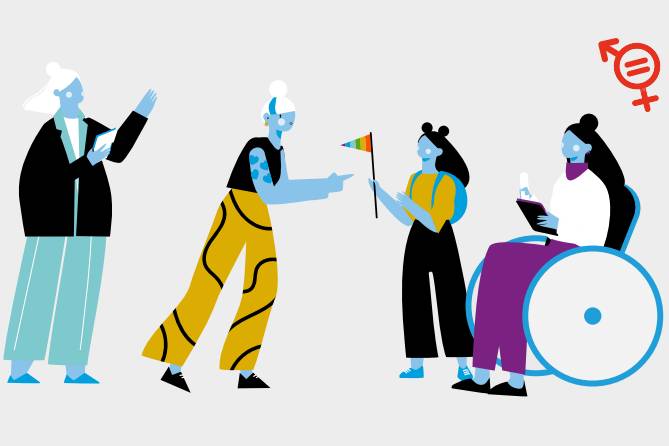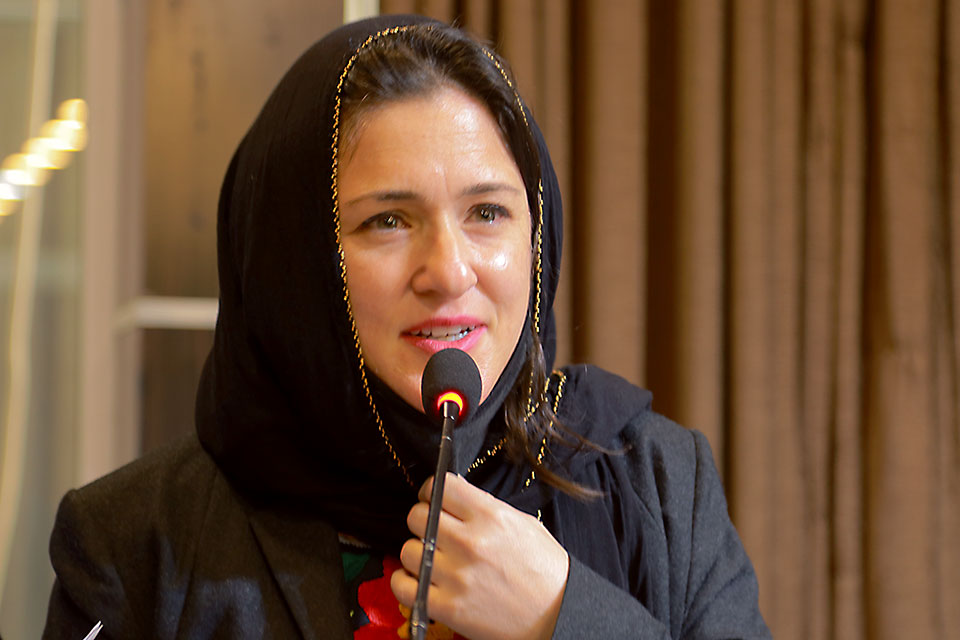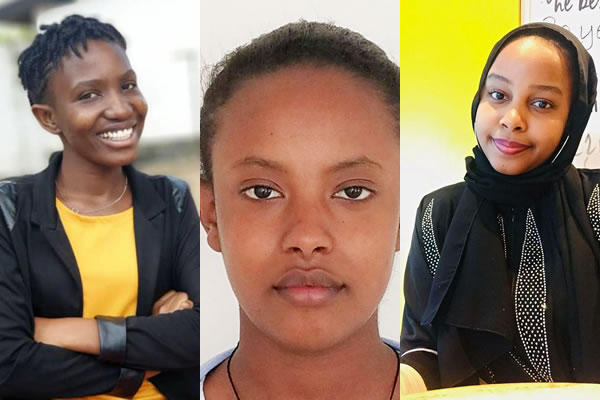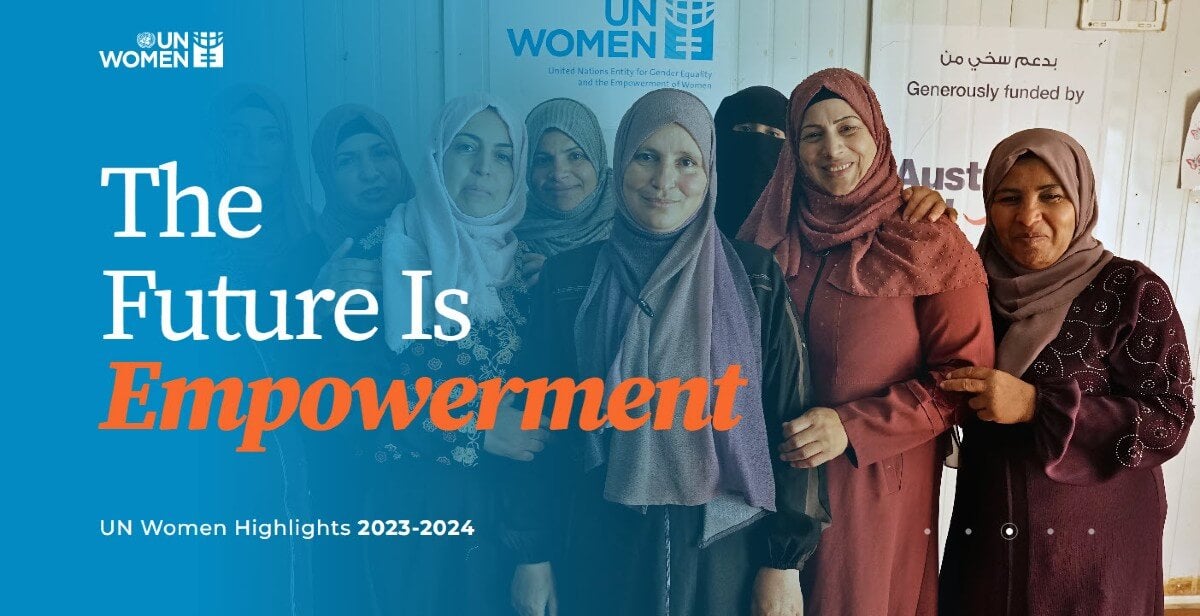The impact of Sudan’s war on women, two years on
Two years into Sudan’s civil war, more than 12 million people have been displaced—over half of them women and children. As gender-based violence surges and essential services collapse, this explainer breaks down how the conflict is affecting women and girls, and what UN Women is doing to support them.
When did the Sudan conflict start and what is happening now?
Two years since civil war broke out between the Sudanese Armed Forces (SAF) and the Rapid Support Forces (RSF) on 15 April 2023, Sudan is now the world’s largest humanitarian crisis and women and girls are paying the highest price. Over 30 million people, or 64 per cent of the population, need assistance.
Sudan has been mired in civil conflicts for decades. Omar al-Bashir ruled Sudan for 30 years until the Sudanese Armed Forces overthrew him in 2019 after widespread protests. However, the transitional civilian government was dissolved within two years, ushering in another period of political and economic turmoil, and eventually leading to armed conflict.
When the latest conflict erupted, Sudan was already grappling with displacement and violence from the 2003 Darfur crisis, and severe floods and droughts linked to climate change that had destroyed crops and livestock. The recent clashes between the Sudanese Armed Forces and the Rapid Support Forces have served a devastating blow to vital services and delivery of aid.
Over 12 million people are displaced inside and outside Sudan, more than half of them are women and children. Peace talks have not started yet.
How are women and girls affected by the Sudan conflict?
The conflict in Sudan has disproportionately shattered the lives of women and girls. Millions have suffered displacement, been stripped of their livelihoods, exposed to soaring levels of gender-based violence, and pushed to extreme hunger.
- Women outnumber men as internally displaced persons across all age groups: 53 per cent of internally displaced persons are female. UN reports show there are at least 5.8 million women and girls displaced within the borders of Sudan. Women make up more than half of the 12 million people displaced inside and outside Sudan.
- Alarming rise in gender-based violence and sexual abuse: In less than two years, the number of people at risk of gender-based violence has more than tripled. An estimated 12.1 million people, or 25 per cent of the population, are at risk. While cases remain vastly under-reported and services are at a standstill, in 2024 Sudan saw a staggering 288 per cent increase in demand for gender-based violence services, compared to previous year.
- Women’s economic insecurity puts them more at risk of gender-based violence: With the collapse of women-led businesses, supply chain disruptions and financial losses, many women who were financially independent now rely on humanitarian aid. Their economic instability makes them even more vulnerable to gender-based violence and sexual exploitation.
- Extreme food insecurity for women: Over half the population of Sudan – more than 24.6 million people – are facing acute food insecurity. Food scarcity has been detected in at least five areas, and five more will follow by May 2025 if the current conditions prevail. Women are less food secure than men because, under existing social norms, they often eat last and least after distributing food among other members of the household.
- Nearly absent healthcare for women: Close to 80 per cent of hospitals in conflict-affected areas are no longer functioning. As a result, maternal deaths are surging and women and girls also lack access to menstrual health supplies, mental health support and safe spaces. Some 80 per cent of displaced women cannot afford or access clean water because of the distance they must travel and safety concerns.
- Women have been excluded from peace talks: Although they are on the front lines, negotiating safe passage for people fleeing violence, providing lifesaving aid, and advocating for peace, women have been excluded from diplomatic talks, including regional and international peace negotiations held previously in Jeddah, Saudi Arabia. Supported by UN Women, women peace champions have demanded 50 per cent representation in peace processes.
How is UN Women supporting the women of Sudan?
In the past two years, UN Women has supported over 60 women-led organizations—many of them operating in the worst impacted areas—reaching over 15,000 women with skills training, humanitarian aid and other services.
UN Women has been a trusted partner for women in Sudan since 2010, working to improve women’s economic empowerment and leadership in all areas, including in peacebuilding, advocating for laws and policies to address gender-based violence and facilitating women’s access to services when they face violence. During the latest crisis, our programmes focus on humanitarian assistance gender-based violence services, livelihoods for women affected by the conflict, and advocacy to include women in ceasefire talks.
Since 2020, the Women’s Peace and Humanitarian Fund has also worked with UN Women in Sudan, supporting 40 local organizations that have boosted the influence and participation of women leaders in formal and informal peace efforts and community dialogues. They have also helped internally displaced women and girls access emergency assistance and gender-based violence services.

